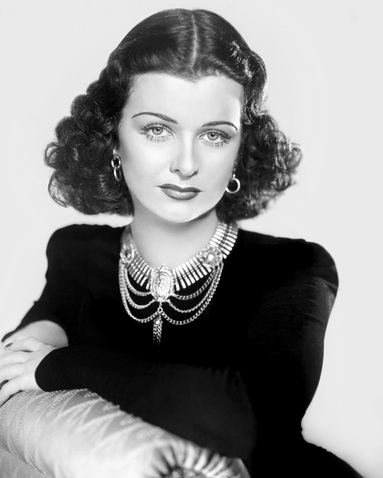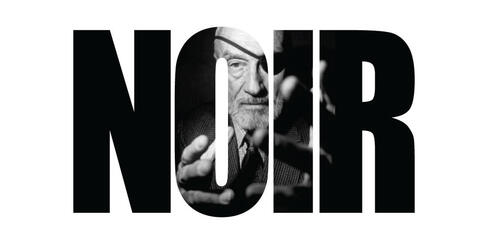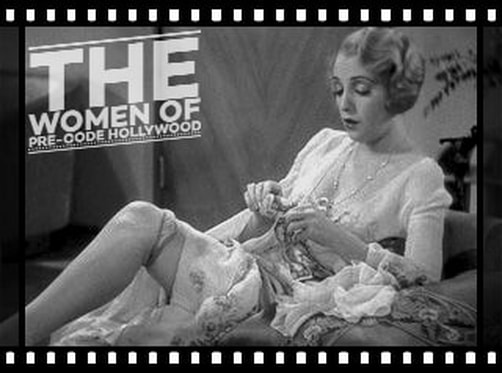JOAN BENNETT
AND FILM NOIR
Joan Bennett made substantial contributions to the film noir genre through her memorable performances and her ability to embody complex female characters, particularly femme fatales. Her work in film noir films showcased her talent for portraying morally ambiguous and enigmatic women, and she left an indelible mark on the genre.
One of Joan Bennett's most renowned film noir roles was in the 1944 film "The Woman in the Window," directed by Fritz Lang. In this film, she played the seductive and mysterious Alice Reed, a femme fatale who draws the protagonist into a web of deceit and danger. Bennett's performance captured the essence of the femme fatale archetype, infusing her character with allure, manipulation, and an air of secrecy. Her chemistry with co-star Edward G. Robinson and her ability to navigate the complexities of her character contributed to the success and enduring popularity of the film.
Another notable film noir in which Bennett showcased her talent was "Scarlet Street" (1945), also directed by Fritz Lang. In this film, she played Kitty March, a cunning and manipulative woman who exploits the vulnerable protagonist, portrayed by Edward G. Robinson. Bennett's portrayal of Kitty March was chillingly effective, as she expertly conveyed the character's duplicity and ruthlessness.
Bennett's performances in film noir demonstrated her ability to captivate audiences with her smoky voice, dark beauty, and a skill for portraying femme fatales who were both alluring and dangerous. She had a talent for conveying complex emotions and motivations, often blurring the lines between victim and perpetrator, and challenging traditional gender roles.
In addition to her performances, Bennett's collaborations with director Fritz Lang played a significant role in shaping her film noir legacy. Lang's atmospheric and morally ambiguous storytelling style meshed well with Bennett's on-screen persona, resulting in some of her most memorable film noir roles.
Joan Bennett's contributions to film noir extended beyond her individual performances. She helped define the femme fatale archetype and added depth and complexity to the portrayals of female characters in the genre. Her impact on film noir continues to be celebrated, and her performances remain influential and highly regarded by fans of the genre.
One of Joan Bennett's most renowned film noir roles was in the 1944 film "The Woman in the Window," directed by Fritz Lang. In this film, she played the seductive and mysterious Alice Reed, a femme fatale who draws the protagonist into a web of deceit and danger. Bennett's performance captured the essence of the femme fatale archetype, infusing her character with allure, manipulation, and an air of secrecy. Her chemistry with co-star Edward G. Robinson and her ability to navigate the complexities of her character contributed to the success and enduring popularity of the film.
Another notable film noir in which Bennett showcased her talent was "Scarlet Street" (1945), also directed by Fritz Lang. In this film, she played Kitty March, a cunning and manipulative woman who exploits the vulnerable protagonist, portrayed by Edward G. Robinson. Bennett's portrayal of Kitty March was chillingly effective, as she expertly conveyed the character's duplicity and ruthlessness.
Bennett's performances in film noir demonstrated her ability to captivate audiences with her smoky voice, dark beauty, and a skill for portraying femme fatales who were both alluring and dangerous. She had a talent for conveying complex emotions and motivations, often blurring the lines between victim and perpetrator, and challenging traditional gender roles.
In addition to her performances, Bennett's collaborations with director Fritz Lang played a significant role in shaping her film noir legacy. Lang's atmospheric and morally ambiguous storytelling style meshed well with Bennett's on-screen persona, resulting in some of her most memorable film noir roles.
Joan Bennett's contributions to film noir extended beyond her individual performances. She helped define the femme fatale archetype and added depth and complexity to the portrayals of female characters in the genre. Her impact on film noir continues to be celebrated, and her performances remain influential and highly regarded by fans of the genre.
AVAILABLE FILMS:
13 HOURS BY AIR (1936)
DESIRE IN THE DUST (1960)
GREEN HELL (1940)
HOUSE ACROSS THE BAY, THE (1940)
LITTLE WOMEN (1933)
MAN HUNT (1941)
MARGIN FOR ERROR (1943)
ME AND MY GAL (1932)
MISSISSIPPI (1935)
NOB HILL (1945)
RECKLESS MOMENT, THE (1949)
SCARLET STREET (1945)
SECRET BEYOND THE DOOR (1948)
WOMAN IN THE WINDOW, THE (1944)
WOMAN ON THE BEACH, THE (1947)
DESIRE IN THE DUST (1960)
GREEN HELL (1940)
HOUSE ACROSS THE BAY, THE (1940)
LITTLE WOMEN (1933)
MAN HUNT (1941)
MARGIN FOR ERROR (1943)
ME AND MY GAL (1932)
MISSISSIPPI (1935)
NOB HILL (1945)
RECKLESS MOMENT, THE (1949)
SCARLET STREET (1945)
SECRET BEYOND THE DOOR (1948)
WOMAN IN THE WINDOW, THE (1944)
WOMAN ON THE BEACH, THE (1947)
VIDEO TRIBUTE:
Joan Bennett

Joan Bennett was an American actress born on February 27, 1910, in Palisades, New Jersey. She had a career that spanned over six decades and left a significant impact on both stage and screen. Bennett is particularly remembered for her contributions to the film noir genre, as well as her versatility in various other film genres.
Bennett came from a prominent acting family, with her father, Richard Bennett, and her sisters, Constance and Barbara, also being successful actors. She began her acting career in the 1920s, making her Broadway debut at the age of 18 in the play "Jarnegan." She quickly transitioned to film, signing a contract with Metro-Goldwyn-Mayer (MGM) in the early 1930s.
In the 1940s, Joan Bennett's career took a notable turn as she became associated with film noir. Her work in films such as "The Woman in the Window" (1944) and "Scarlet Street" (1945), both directed by Fritz Lang, showcased her ability to portray complex, seductive, and morally ambiguous characters. Her collaboration with Lang and her performances in these films solidified her reputation as one of the prominent femme fatales of the era.
Bennett's talent for playing layered and enigmatic women with hidden agendas made her an ideal fit for the film noir genre. Her performances often involved a mix of charm, manipulation, and vulnerability, which captivated audiences and added depth to her characters. She had a distinct screen presence, with her dark hair, expressive eyes, and husky voice becoming her trademark features.
Outside of film noir, Joan Bennett had success in various other film genres, including romantic comedies, dramas, and thrillers. Some of her notable films include "Father of the Bride" (1950), directed by Vincente Minnelli, and "Little Women" (1949), where she portrayed Amy March. She also appeared in a range of television roles later in her career, including the popular gothic soap opera "Dark Shadows" in the 1960s.
In addition to her acting career, Bennett was also involved in philanthropy and activism. She supported charitable causes, including the American Red Cross, and actively participated in community efforts.
Joan Bennett's career declined in the late 1950s, but her impact on film noir and her contributions to the overall landscape of cinema remain significant. Her work helped define the femme fatale archetype and showcased her versatility as an actress. Bennett passed away on December 7, 1990, in Scarsdale, New York, leaving behind a legacy as a talented and influential figure in the world of film and entertainment.
Bennett came from a prominent acting family, with her father, Richard Bennett, and her sisters, Constance and Barbara, also being successful actors. She began her acting career in the 1920s, making her Broadway debut at the age of 18 in the play "Jarnegan." She quickly transitioned to film, signing a contract with Metro-Goldwyn-Mayer (MGM) in the early 1930s.
In the 1940s, Joan Bennett's career took a notable turn as she became associated with film noir. Her work in films such as "The Woman in the Window" (1944) and "Scarlet Street" (1945), both directed by Fritz Lang, showcased her ability to portray complex, seductive, and morally ambiguous characters. Her collaboration with Lang and her performances in these films solidified her reputation as one of the prominent femme fatales of the era.
Bennett's talent for playing layered and enigmatic women with hidden agendas made her an ideal fit for the film noir genre. Her performances often involved a mix of charm, manipulation, and vulnerability, which captivated audiences and added depth to her characters. She had a distinct screen presence, with her dark hair, expressive eyes, and husky voice becoming her trademark features.
Outside of film noir, Joan Bennett had success in various other film genres, including romantic comedies, dramas, and thrillers. Some of her notable films include "Father of the Bride" (1950), directed by Vincente Minnelli, and "Little Women" (1949), where she portrayed Amy March. She also appeared in a range of television roles later in her career, including the popular gothic soap opera "Dark Shadows" in the 1960s.
In addition to her acting career, Bennett was also involved in philanthropy and activism. She supported charitable causes, including the American Red Cross, and actively participated in community efforts.
Joan Bennett's career declined in the late 1950s, but her impact on film noir and her contributions to the overall landscape of cinema remain significant. Her work helped define the femme fatale archetype and showcased her versatility as an actress. Bennett passed away on December 7, 1990, in Scarsdale, New York, leaving behind a legacy as a talented and influential figure in the world of film and entertainment.
quotes:
"I don't think much of most of the films I made, but being a movie star was something I liked very much."
[about the attention she was getting as a cast member of the cult series Dark Shadows (1966)] "I feel positively like a Beatle."
[on femme fatales] "Let people hiss. They'll still be sore at the bad woman long after they've forgotten the nice girl who got the man. Few people remember good women. They don't forget bad girls."
[1970] "Now that I stop to think of it, there are only a scant half-dozen of my own total of seventy films that were acceptable to me and they include Little Women (1933), Private Worlds (1935), Trade Winds (1938), Man Hunt (1941), The Woman in the Window (1944), and Scarlet Street (1945)."
"Had it not been for my new darker image, I'd never have been considered for the role of Scarlett O'Hara in Gone with the Wind (1939)."
- Joan Bennett
trivia:
She made five films for Fritz Lang, more than any other American actor or actress who worked with him (many actors disliked working with Lang).
Was offered the role of Beth McCarthy in Cocoon (1985). Director Ron Howard wanted to reunite co-star Don Ameche with one of his former leading ladies and he thought of Joan. Unfortunately, she was in frail health at the time and supposedly turned down the role, a decision she later regretted when "Cocoon" became one of the biggest box office hits of 1985 and spawned a sequel. The part was played by Gwen Verdon. Miss Bennett did not,
Was offered the role of Beth McCarthy in Cocoon (1985). Director Ron Howard wanted to reunite co-star Don Ameche with one of his former leading ladies and he thought of Joan. Unfortunately, she was in frail health at the time and supposedly turned down the role, a decision she later regretted when "Cocoon" became one of the biggest box office hits of 1985 and spawned a sequel. The part was played by Gwen Verdon. Miss Bennett did not,




